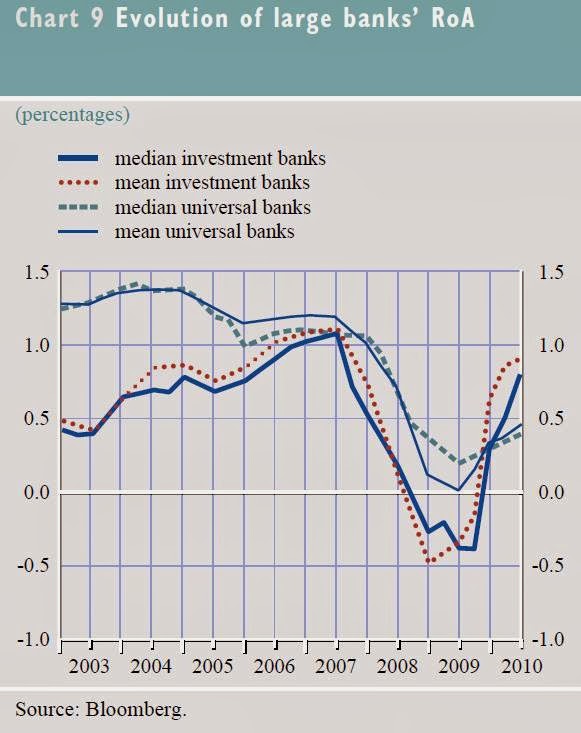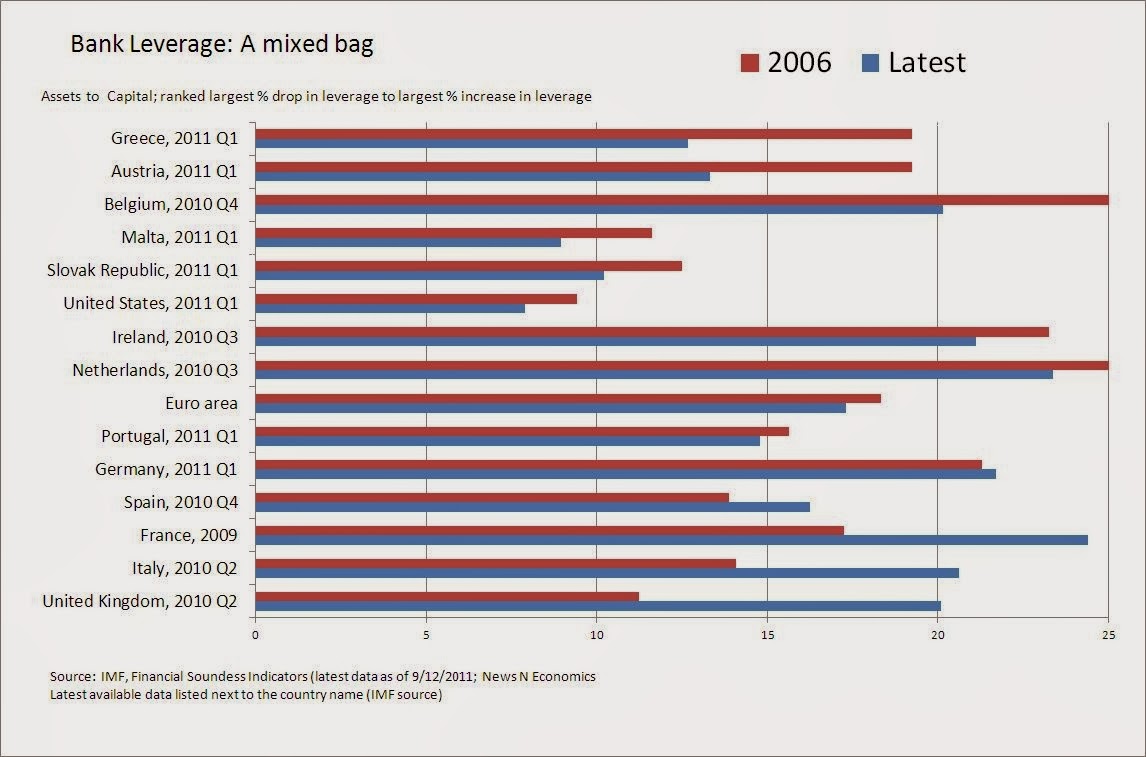Too put it simplistically, the capital structure
of an enterprise is determined by preference for the level of debt versus
equity. It depends on whether the enterprise is more risk-averse or rather risk
loving. In the latter case, it would prefer a higher degree of debt. Of course,
cost motives also play a role.
Now in the case of a bank, capital structure is
not purely driven by preferences. In determining the level of equity and debt,
banks have to fulfill certain requirements put forward by the government. Banks
have a vital role in the economy, namely facilitating spending and investment.
If a bank would go bankrupt, it has far-reaching implications, affecting
millions of people. This we have seen with the recent financial crisis. Thus
the governments try to prevent the worst-case-scenario from happening. However
globalization came up along the way. These days, banks are active across
national borders. This raises the need for international regulation with
respect to the banking system.
This need was answered by the development of
Basel Committee on Bank Supervision. This is an international advisory
authority on bank regulation, raising issues critical to the health of the
banking system. The Basel Committee has developed capital adequacy standards that
national regulators can implement, named the Basel Accords. The accords all
address the need for bank capital regulation. This means that they request
rules that require banks to hold certain levels of capital.
With the financial crisis of 2008, the Basel
Committee on Banking Supervision found an opportunity to restructure the
approach to risk and regulation in the financial industry. They developed the
Basel 3 framework to augment the framework of Basel 2 in 2010. In 2013, the
European Union implemented the Basel 3 agreements in the EU legal framework.
The primary goal is to improve the ability of banks to absorb asset losses
without affecting the whole economy. Next it aims to strengthen global capital
and liquidity regulations with the goal of promoting a more resilient banking
sector. Below you can find a breakdown of the Basel 3 proposals in order to
achieve these objectives.
So we have pointed out that Basel 3 is a very recent accord. Nevertheless a lot of criticism has been
formed and the potential impacts have been researched extensively. We will set
out here a summary of the impact on the individual banks and on the financial
system as a whole.
Impact on individual banks
-Reduction in competition
-Pressure on profitability and ROE
-Increase in long-term funding
-Increase in group reorganizations
Impact on financial system
-Reduction in risk of individual bank failure
-Reduction in lending capacity
-Reduction in investors' willingness to invest in bank debt or equity
-Room for arbitrage when Basel 3 is implemented internationally in different ways
Impact on individual banks
-Reduction in competition
-Pressure on profitability and ROE
-Increase in long-term funding
-Increase in group reorganizations
Impact on financial system
-Reduction in risk of individual bank failure
-Reduction in lending capacity
-Reduction in investors' willingness to invest in bank debt or equity
-Room for arbitrage when Basel 3 is implemented internationally in different ways
We briefly illustrate the points made above. Starting at the top, weak banks will find it harder to raise the required capital, leading to a reduction in competition. Next the need to reorganize and deal with regulatory reform puts pressure on the margins. The two liquidity ratios in Basel 3 focus on short-term and long-term liquidity and funding will drive firms away from short-term funding. Finally, increased supervisory will lead to a reorganization of groups. Now we are at the impact on the financial system. An increased buffer in capital and liquidity should reduce the risk of bank failure. Further increase in capital and liquidity regulation may lead to a reduction in capacity for banking activity. ROE and profitability of banks decrease so there is less room for dividends. Finally, international regulatory arbitrage may remain to disturb the stability of the financial system.
"In the EU we are noticing that there is a credit crunch that you would not normally expect in a more positive economic environment. So, while consumer confidence is increasing, OEMs' ability to keep up with this demand may soon diminish as working capital reserves are exhausted and banks resist lending due to the ongoing overhaul of the European banking system.. Though full implementation of Basel III is not expected in the EU until 2018, it already appears to be influencing banks' credit strategies."
References:




